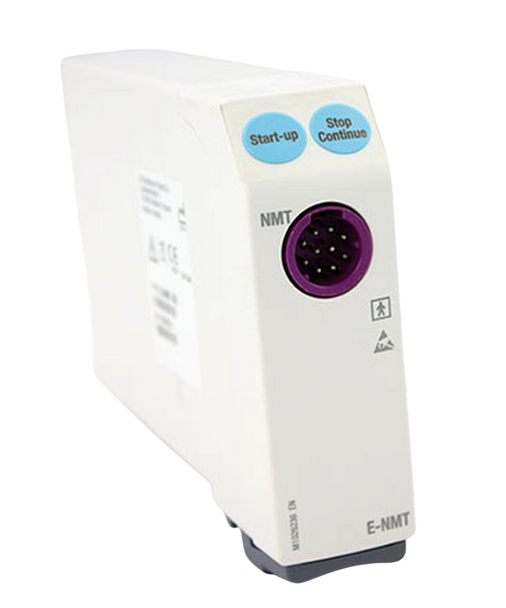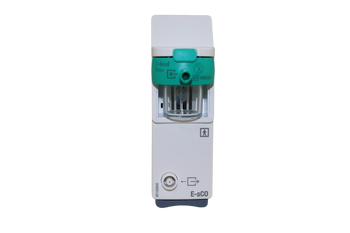Description
Quantifying Muscle Response During Anesthesia And Critical Care
The NMT Module provides a quantitative way to measure the muscle response to stimuli. General anesthesia is a muscle relaxation to provide the surgeon with optimal working conditions, while patients are under the influence of anesthesia it is important to monitor the patient through mechanical ventilation.
The Mechano Sensor on the NMT module quantifies the evoked stimulus and measures the motion of the thumb by a piezoelectric sensor, which converts the motion into an electrical signal. The sensor is available for adults or pediatric use. The Mechano Sensors can be attached securely to the patient hands via tape.
The NMT Module can quantitate the muscle response in a variety of different parameters depending on the type and level of the neuromuscular block. It can utilize the train of four ratios (TOF%), TOF Count, and Post-Tetanic Count (PTC). The NMT module allows you to find the optimum size of the regional nerve to block and thus optimize the bolus of the anesthetic to be injected. It also protects the patient against mechanical nerve and vessel lesions.
This NMT module is a great way to optimize dosage for your patient and help facilitate an optimal, cost-effective administration of neuromuscular blocking drugs. It optimizes recovery since you can monitor the level of neuromuscular blockage you can follow up and correct the timing of the antagonism, this may decrease the incidence of residual paralysis. It also increases patient safety after extubation. By quantifying TOF, you can safely determine when a patient is ready to extubate without the fear of residual block or respiratory complications. The NMT module can be used as a monitoring system, displaying the measured values and allowing you to trend and automatically document information for your monitoring needs.
90-day parts and labor warranty is included.












